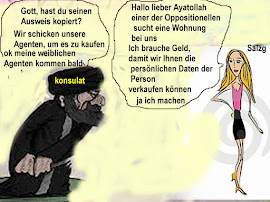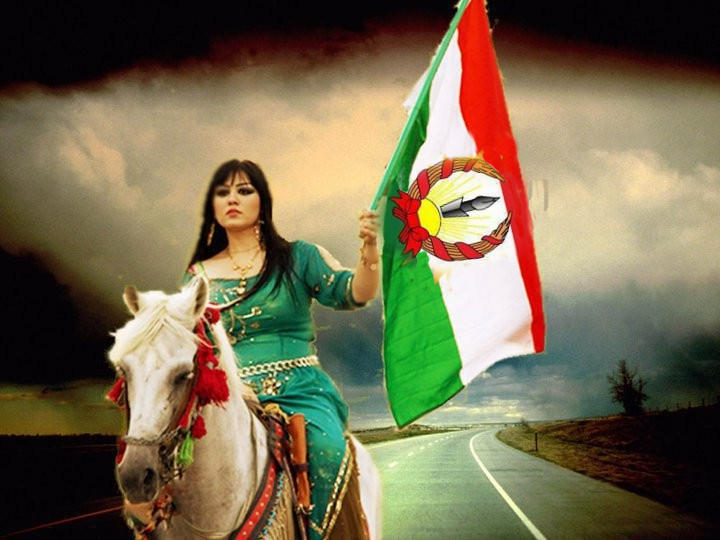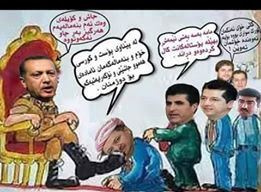Those who met their appointment with FREEDOM.
On the anniversary of the 1988 massacre of 30,000 political prisoners in Iran
The 1988 massacre of over 30,000 political prisoners in Iran
has been described as the worst crime against humanity since World War II. [1]
28 years after this genocide, the Iranian regime still refuses to acknowledge the executions, or provide any information as to how many prisoners were killed.
Based on eyewitness accounts of survivors, the massacre had been prepared for from at least a year before. The order for the massacre came from Khomeini directly in the form of a religious decree (fatwa), calling for the execution of all who remained steadfast in their support for the opposition People's Mojahedin of Iran.[2]
A so-called Amnesty Commission (better known among prisoners as the Death Commission) asked a simple question from every prisoner: do you still support the PMOI/MEK? Those who answered yes were executed, even if they had already finished serving their original sentence.[3] None of the victims had any new activities while in detention and many of them were 15 or 16 years of age at the time of original arrest and prosecution.
The executions started in the last week of July, peaking on July 28 until August 14, and continuing onto autumn and even the following year in some places.
Naturally, the vast majority of the victims were members and supporters of the PMOI/MEK, but the order extended to other groups in later stages.
Prisoners were hanged in groups, sometimes 10 to 15 at a time, and later transported out of prison by dump trucks, and buried in unmarked mass graves. There was no mercy on anyone, even young girls and pregnant women.
Khomeini’s haste to execute was so abhorrent many of his closest confidantes had doubts about it. Hossein Ali Montazeri, Khomeini's heir apparent and the country's second highest authority at the time, urged for leniency and a slowdown.[4]
In a book of memoirs published in December 2000, Montazeri pointed out the vicious tortures practiced especially against young girls and women before execution during the 1988 massacre.
In a famous letter to Khomeini which led to his ouster, Montazeri wrote, "If you probably insist on your decision, at least order (the three-man Death Commission) to base their rulings on unanimous vote not that of the majority. And women should also be made exceptions, especially women who have children. And finally, the execution of several thousand people in several days will backfire."
From this letter we can understand the role and impact of women in the prisons of those days. They were firm and resilient and inspired resistance despite knowing the fact that they would have to go through the horrifying experience rape before being hanged. But they said NO to the executioners.
It has been reported that 80 percent of PMOI women detained in the Women's Ward 3 of Evin Prison had been massacred by September 1988. They included Monireh Rajavi, who had two small daughters and was executed only because she was the sister of the Iranian Resistance's Leader Massoud Rajavi. There was also Ashraf Ahmadi, a political prisoner from the Shah's time, with four children. The victims also included a wide range of people from various professions, including PMOI's female candidates for parliamentary elections Fatemeh Zare'ii from Shiraz, and Zohreh Ainol-Yagheen from Isfahan. Dr. Hamideh Sayyahi and Dr. Shourangiz Karimian, along with her sister, and National Volleyball Team player Forouzan Abdi were among those executed in the 1988 massacre.
An audio clip just recently released by Montazeri's family on his website, also reveals dreadful details about the massacre of women. The tape recording from Mr. Montazeri's meeting with members of the Death Commission, includes an example about the execution of a 15-year-old girl who had been taken to prison only two days before to break her resistant brother but since she did not denounce her executed brother, she was executed, as well.
The tape also includes reference to the execution of a pregnant woman in Isfahan.
The overall picture of the 1988 massacre is totally inadequate because the massacre was extensive, carried out in prisons all across the country. In some instances, there was not any survivor. The clerical regime dealt with every information regarding the massacre as top secret, not allowing any leaks.
So, what is known about the massacre has been extracted and pieced together from the limited number of reports by survivors and families who were called to collect the bodies of their loved ones,[5] as well as from scattered acknowledgments made by the regime's former officials as noted in this article.
The other side of this crime against humanity is of course, the steadfastness of a generation of prisoners who did not buckle under the threat of death and defended their identity which was akin to their nation's freedom. They thus sealed their nation's right to freedom of choice and thought, and turned this great crime against humanity into an epical humane epitome of human grace and grit which makes every conscientious human being humble before its magnificence.
The Iranian Resistance has renewed its call for the international prosecution of all perpetrators of the 1988 massacre and crime against humanity in Iran, who are still in power and hold important positions of authority. They include Khamenei (then President under Khomeini), Rafsanjani (then acting Commander-in-chief of the Armed Forces), Rouhani (then assistant to the acting Commander-in-Chief of the Armed Forces), and members of the death commission, Mostafa Pour-Mohammadi (Minister of Justice under Hassan Rouhani), Hossein-Ali Nayyeri (head of the Supreme Disciplinary Court for Judges under Rouhani), Morteza Eshraqi (then Prosecutor), and Ebrahim Raeesi (one of the top clerics, member of the Assembly of Experts, and Khamenei's appointed head of Astan Qods-e Razavi foundation, which is an important political and economic powerhouses funding the regime's war efforts).
[1] A former Intelligence Ministry deputy recorded a video clip in 2008, in which he revealed that the clerical regime had massacred some 33,700 political prisoners and buried them in mass graves. According to Reza Malek, there are between 170 to 190 mass graves across the country.
[2] "Whoever at any stage continues to belong to the (PMOI/MEK) must be executed," Khomeini's fatwa read.
[3] Khomeini assigned a three-member so-called "Amnesty Commission", who held summary trials and actually interrogated prisoners to determine their fate.
The questions were focused on whether the inmate continued to have any allegiances to the PMOI/MEK. If the prisoners were not willing to fully collaborate with the regime against the PMOI/MEK, it was viewed as a sign of sympathy to the organization and the sentence was immediate execution.
[4] Montazeri was ousted and placed under house arrest until his death in 2009, for his protests against the massacre.
[5] A report from Shiraz indicated: "When we the rumors of the massacres spread among the public, we referred to the prison. Executioners told us, 'What did you expect, that we serve you sweets and candies? We killed 860 people at once in one day! Now, if you hold a funeral, we will raze down your house as well.' "



















.jpg)








































Inga kommentarer:
Skicka en kommentar